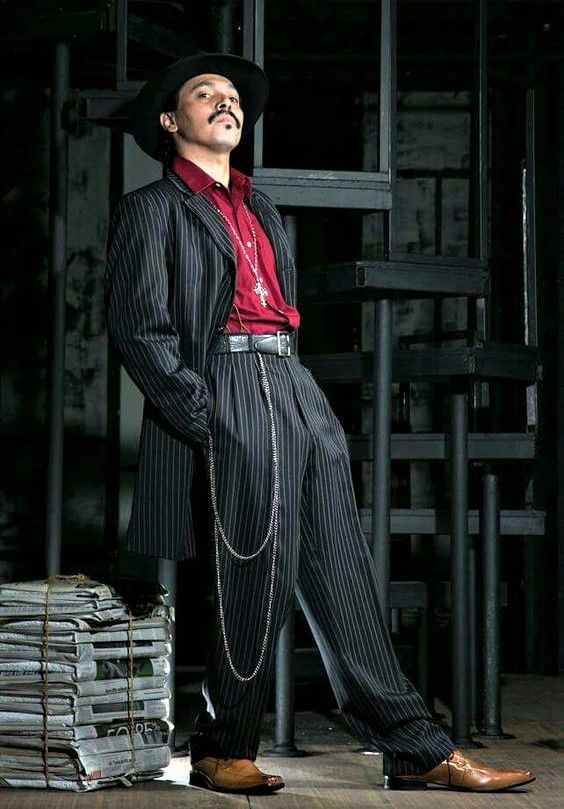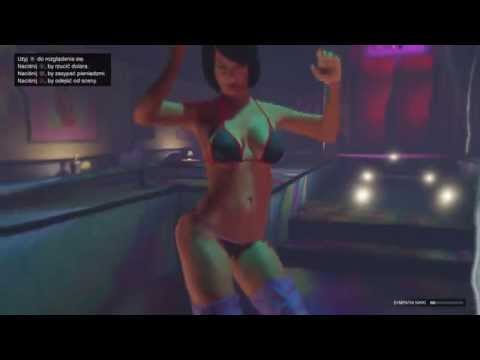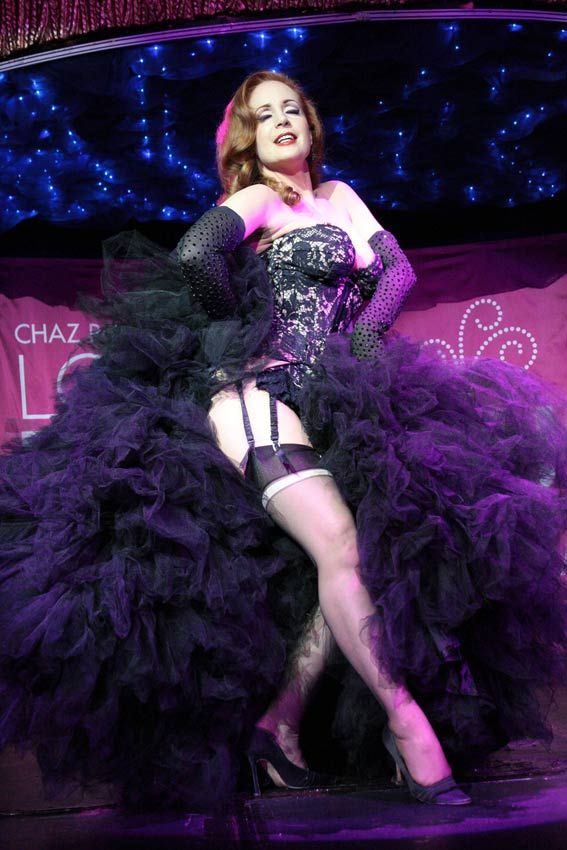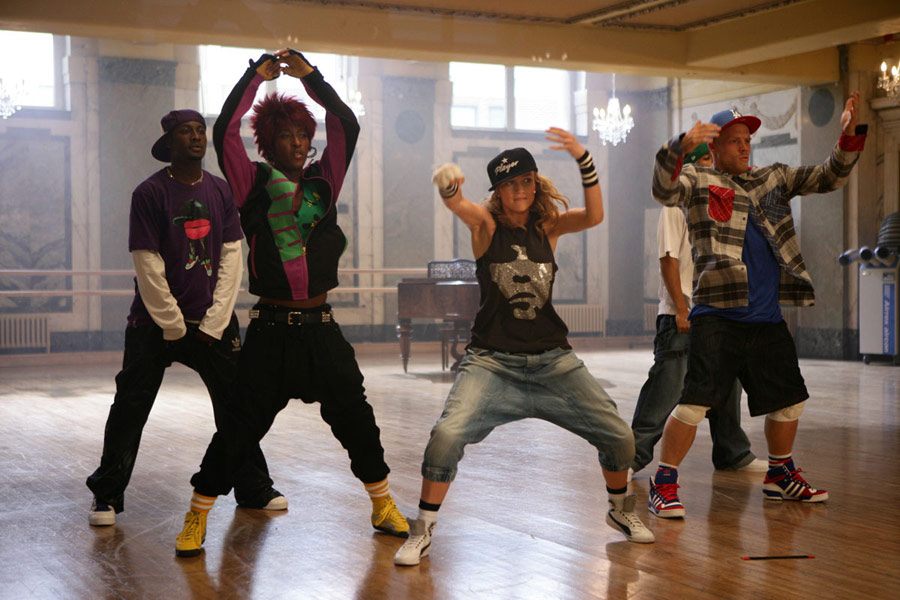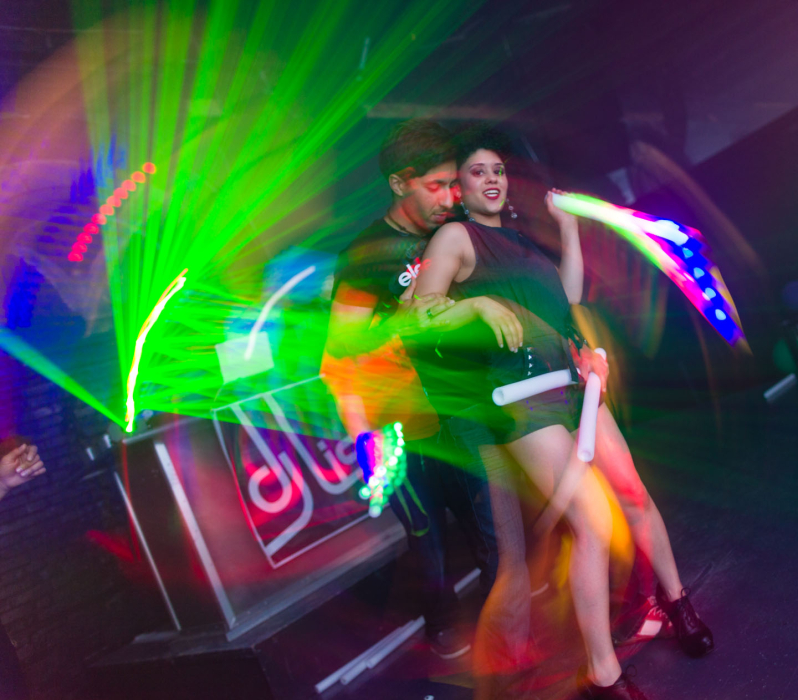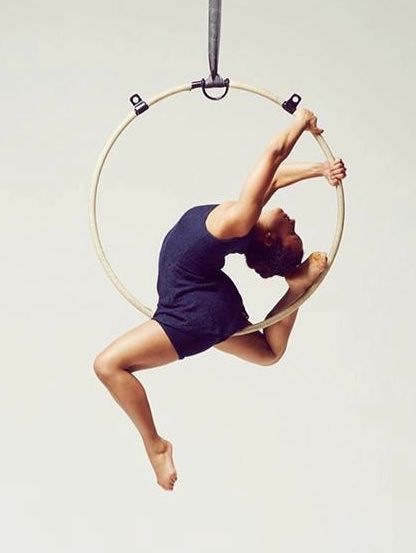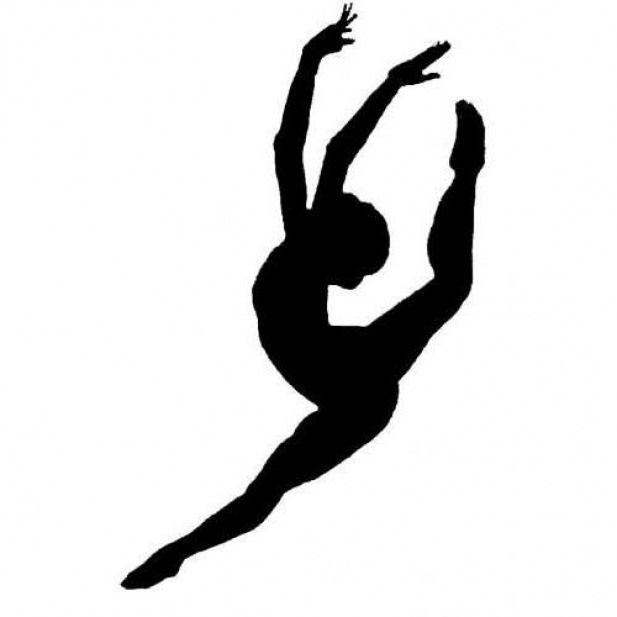How to dance pachuco
Chicana/o Rebellious Dancers: The Pachuco/a Zoot Suiters
1 Comment Gabriela Mendoza-Garcia
This month I am writing about our Chicana/o ancestors from 1940s who showed their rebellious ways through dance, music, dress, speech, and culture. Yes, I am talking about the Zoot Suiter or the Pachucos and Pachucas of this era. As they danced the jitterbug in their zoot suits they defiantly retaliated against assimilation. Yet, this story begins with a killing….
In Los Angeles, California in 1942 Josè Díaz attended a party near Sleepy Lagoon which was a popular place for Mexican-American or Chicano youth to hang out. He was found bleeding to death. Immediately, the police began looking for the killer. They swept through Chicano neighborhoods and rounded up six hundred youths. Twenty-two Chicanos who were members of the 38th Street Gang were charged with murder and assault. Scholars who comb through historical evidence now note that this trial was unjust. This was known as the Sleepy Lagoon Incident.
Then, on June 7, 1942, Vicente Morales who wore a zoot suit took his date to the Orpheum Theatre for a night of dancing. Sometime during this evening, a group of white sailors beat him up while shouting profanities. They stripped him of his zoot suit and his girlfriend had to cover his naked, beaten body with her own coat. The police arrested him on charges of disturbing the peace. He went to jail. So, began the Zoot Suit Riots where hundreds of Service men roamed the streets of Los Angeles targeting Chicanos wearing Zoot Suits. The pachucos were beaten in front of a crowd, stripped of their zoot suits, and arrested by police for vagrancy, disturbing the peace and other charges. The news media added to the hype by labeling the Zoot Suiters as un-American and juvenile delinquents. Eventually the Zoot Suit riots were quelled after an outcry by the Mexican government.
Why Dress in Zoot Suits?
During this time, Americans were fighting in World War II. All citizens were expected to fight for their country and support the war. Many Chicanos fought during World War II but they were still segregated in schools, movie theaters, hotels, restaurants, etc. They were discriminated against at work and were the targets of prejudice. However, the Chicana/o youths were not powerless. Instead, of succumbing to demands that they assimilate to American society. They rebelled and created the Pachuca/o style (Alvarez 2008, 155, 15-18, 78).
Rebellious Attire
The pachucos and pachucas of the 1940s were known for wearing their rebellious attire known as the Zoot Suit. Luis Alvarez in The Power of the Zoot: Youth Culture and Resistance During World War II (2008) quotes a former Zoot Suiter from Los Angeles, California.
Yeah everything was brown. And the coat came down to here [pointing to the knees], right down to here.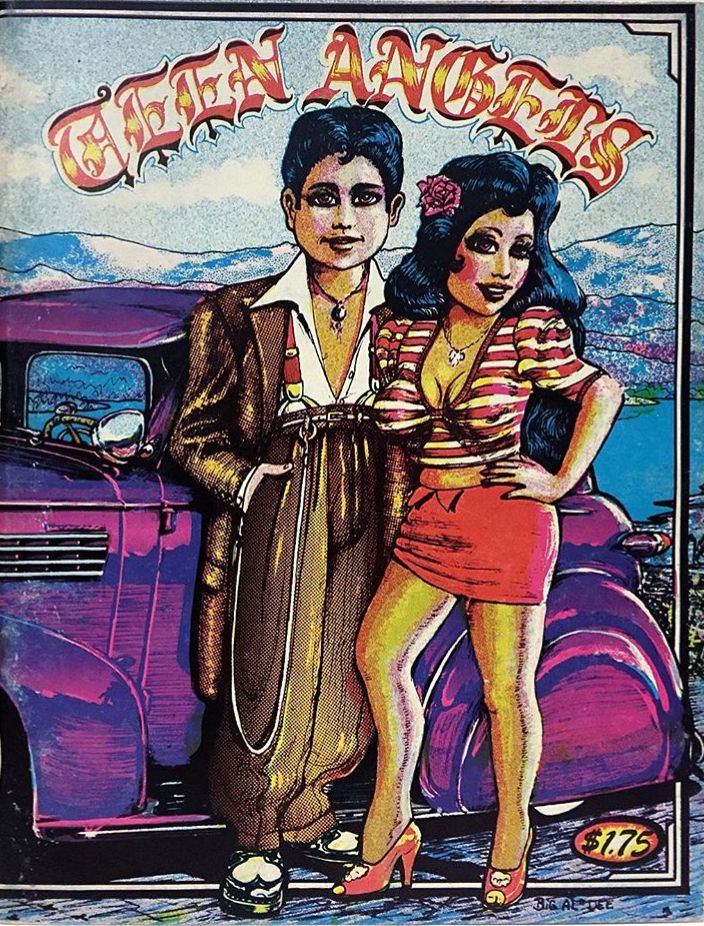 And the silver chain from the pocket, and the wide, like a pancake, hat, with a real wide brim. …And we would dress up that like that to go to the dances. All of us. All wear the same thing. With the big chain, we’d twirl the chain (Alvarez 2008, 86).
And the silver chain from the pocket, and the wide, like a pancake, hat, with a real wide brim. …And we would dress up that like that to go to the dances. All of us. All wear the same thing. With the big chain, we’d twirl the chain (Alvarez 2008, 86).
The pachuca wore a short skirt, a pompadour hair do, and “loud” make-up. Some wore pants and blazer types shirts the equivalent of the male zoot suit (Ramírez 2002, 15).
Pachucas of the 1940s from “the Pachuca and Chicana Style Politics”Dancing Pachucos and Pachucas in the 1940s
The Zoot suiters of the 1940s danced the jitterbug (Delgado 1971, 5). This was a very difficult dance involving intricate footwork and partnering skills. They twisted, hopped in a synchronized, fast pace together with their dance partners. Oftentimes couples incorporated dance tricks involving amazing jumps and lifts.
Zoot suiters listened to jazz music. This music would later evolve into bebop (Alvarez 2008, 144). They also liked music by artists Artie Shaw & His Orchestra, Benny Goodman, & Harry James. They really loved dancing to the music of Louis Jordan and His Tympany Five especially the song Caldonia. Later on, they would dance to anything by Chubby Checkers (Delgado 1971, 5).
This music would later evolve into bebop (Alvarez 2008, 144). They also liked music by artists Artie Shaw & His Orchestra, Benny Goodman, & Harry James. They really loved dancing to the music of Louis Jordan and His Tympany Five especially the song Caldonia. Later on, they would dance to anything by Chubby Checkers (Delgado 1971, 5).
To listen to Caldonia by Louis Jordan and His Tympany Five, please see below.
Caldonia by Louis Jordan and His Tympany FiveAlso, new songs with pachucos as a theme became the rage. One very popular melody was the song called Pachuco Boogie by Edmundo Tostado or Don Tosti. One reason this song was so popular is because the singer uses the unique Pahcuco/a slang in a musical conversation (Alvarez 2008, 140).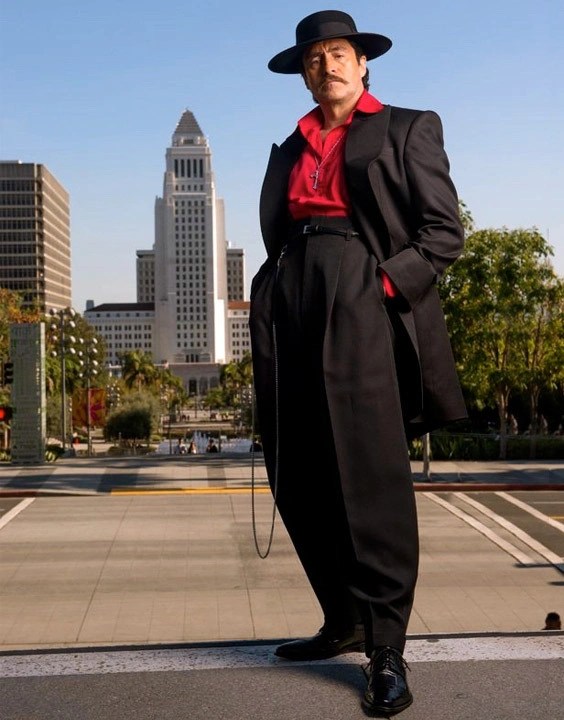
To listen to Pachuco Boogie, please see below:
Pachuco BoogieDancing the Zoot Suit Style in Folklórico
Zoot Suit style dancing gained national attention when featured in the play Zoot Suit (1979) and film (1981) by Luis Valdez. Valdez depicted pachucos and pachucas dancing with their zoot suits. With that, folklórico groups across the country began incorporating Zoot Suit style dancing in their repertoire. Frank Trujillo of The National Chicano Dance Theater based in Denver, Colorado choreographed his own Zoot Suit dance suite based upon family research (Nájera-Ramirez 2012, 172). In their program Trujillo gives a brief history of the Sleepy Lagoon incident and the Zoot Suit riots.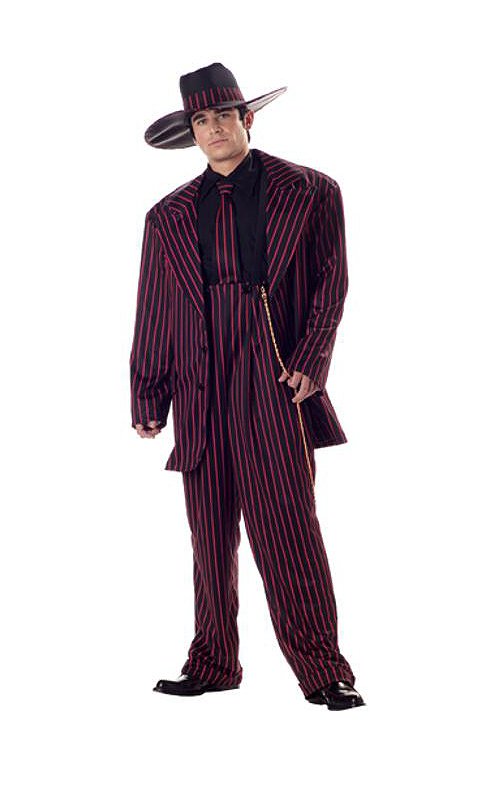 He choreographed an entire suite of dances depicting the Zoot Suiters. The National Chicano Dance Theater toured the United States in 1980 showcasing this suite alongside other dances. (Chronology: Cuatro Epocas Program).
He choreographed an entire suite of dances depicting the Zoot Suiters. The National Chicano Dance Theater toured the United States in 1980 showcasing this suite alongside other dances. (Chronology: Cuatro Epocas Program).
At the Asociación Nacional de Grupos Folklóricos (ANGF) conference in 1982 held in Alamosa, Colorado the Bailadores del Bronce folklórico group from Seattle, Washington wowed attendees with their performed of Zoot Suit style dances (ANGF Conference IX Syllabus). Randy Robert López was a member Bailadores del Bronce and performed at the ANGF conference. The group was directed by Elma Gonzalez Radke. He tells me that sometime between 1978 and 1979 all the dancers created these choreographies. He says that the dances were created in a collaborative effort each adding new steps and sequences (López 2019).
Lopez is pictured third from right with the Bailadores del Bronce Also, the Grupo Folklórico Semillas de la Tierra in Alamosa, Colorado would learn these dances from Juan Rios who was a former dancer with the National Chicano Dance Theatre. They premiered their own Zoot Suit dances in the early 1980s with a poetic recitation by Abelardo Delgado. They also dedicated the Zoot Suit suite to the pachucos and pachucas of the 1940s. Nowadays as a Tejana, I have seen/heard of folklorico groups such as the University of Texas Rio Grande Valley Ballet Folklórico and the Round Rock Ballet Folklórico perform Zoot Suit style dances. I know that there are so many of us that remember the rebellious Pachuca/os through dance.
They premiered their own Zoot Suit dances in the early 1980s with a poetic recitation by Abelardo Delgado. They also dedicated the Zoot Suit suite to the pachucos and pachucas of the 1940s. Nowadays as a Tejana, I have seen/heard of folklorico groups such as the University of Texas Rio Grande Valley Ballet Folklórico and the Round Rock Ballet Folklórico perform Zoot Suit style dances. I know that there are so many of us that remember the rebellious Pachuca/os through dance.
My Thoughts
Many of us continue to create, innovate, and pass on the songs and jitterbug dance styles of the zoot suit era as a way to remember our ancestors who were unjustly targeted as anti-American. No longer wanting to fit into the melting pot they showed their unique individuality through dress, speech, music, and dance. We keep their rebellious spirit in our hearts as we perform our Zoot Suit dances.
Written by Gabriela Mendoza-Garcia Ph.D.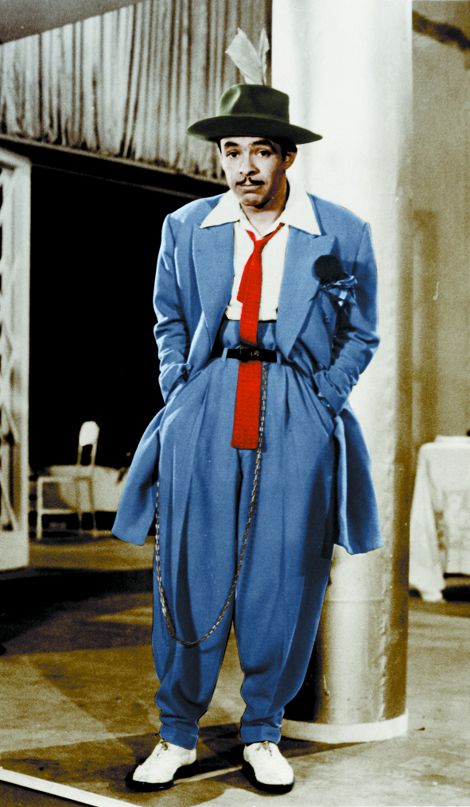
To read my latest research please purchase the book Dancing Throughout Mexican History (1325-1910) which is written by Sanjuanita Martinez-Hunter and edited by myself. It is available for purchase on Amazon.com.
Dancing Throughout Mexican History (1325-1910)Works Cited
Alvarez, Luis. 2008. The Power of the Zoot: Youth Culture and Resistance During World War II. Berkeley: University of California Press.
Asociación Nacional de Grupos Folklóricos Conference IX Syllabus. 1982.
Delgado, Abelardo B. The Chicano Movement: Some Not Too Objective Observations. El Paso: Barrio Publications.
Jordan, Louis. n.d, Caldonia. Performed by Louis Jordan and His Tympany Five. https://www.youtube.com/watch?v=PR6pHtiNT_k (accessed March 28, 2019).
López, Randy Robert. 2019.Correspondence by author. March 28.
Nájera-Ramirez. Ballet Folklórico and Mexican Identity. In Dancing Cultures: Globalization,Tourism, and Identity in the Anthropology of Dance.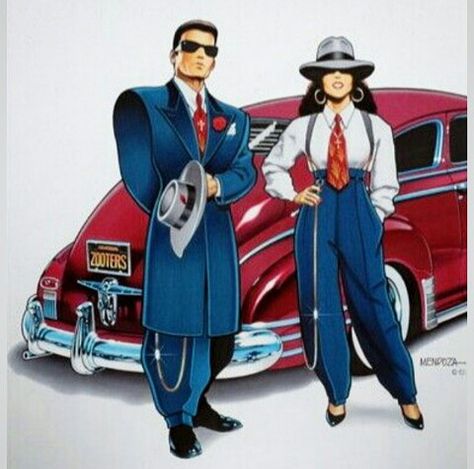 ed. Héléne Neveu Kringelbach and Jonathan Skinner, 161-176. New York: Berghahn Books.
ed. Héléne Neveu Kringelbach and Jonathan Skinner, 161-176. New York: Berghahn Books.
The National Chicano Dance Theater: Chronology-Cuatro Epocas Program. n.d. Artes Chicanos.
Sanchez, Yolanda. 2019. Round Rock Ballet Folklorico Photograph.
Ramírez, Catherine S. 2002. “The Pachuca and Chicana Style Politics.” Meridians. 2(2): 1-35.
Tosti, Don. n.d. Pachuco Boogie. By Orquesta de Don Ramon. https://www.youtube.com/watch?v=t1Lf81W0vpA (accessed March 29, 2019).
Like this:
Like Loading...
This entry was posted in ballet folklorico, Chicano, dance, pachuca, pachuco, zoot suit and tagged ballet folklorico, dance, folklorico, pachuca, pachuco, zoot suit. Bookmark the permalink.Pachuco – Subcultures and Sociology
History
A Pachuco and a Pachuca wearing traditional Pachuco attire.
Background
Pachuco is a group of Mexican American youth which originated in the early 1940s in the locations of Ciudad Juarez, Mexico and El Paso, Texas. Eventually, through migration, a population of Pachucos was concentrated in Los Angeles, California. Pachucos faced discrimination from wealthier Americans as well as from structural law enforcement groups on accounts of identity and customs, like their fashion styles and language. A way to visualize Pachucos and understand the way that they were perceived is to think of them as classy gangsters. In order to survive in a hostile climate, they relied on the strategies, listed by Durán as: “The pachuco’s strategies for survival, resistance and appropriation are seen through their physical appearances and performances. This includes language (caló), hairstyles, tattoos, clothing, and dance” (Durán 2002: 42). There are also key events in Pachuco culture and history, like the Sleepy Lagoon Murder and Zoot Riots, which contribute to understanding the resistance of Pachucos. The Pachuco identity is best understood as a form of resistance to social forces, through their subcultural customs and capital.
Eventually, through migration, a population of Pachucos was concentrated in Los Angeles, California. Pachucos faced discrimination from wealthier Americans as well as from structural law enforcement groups on accounts of identity and customs, like their fashion styles and language. A way to visualize Pachucos and understand the way that they were perceived is to think of them as classy gangsters. In order to survive in a hostile climate, they relied on the strategies, listed by Durán as: “The pachuco’s strategies for survival, resistance and appropriation are seen through their physical appearances and performances. This includes language (caló), hairstyles, tattoos, clothing, and dance” (Durán 2002: 42). There are also key events in Pachuco culture and history, like the Sleepy Lagoon Murder and Zoot Riots, which contribute to understanding the resistance of Pachucos. The Pachuco identity is best understood as a form of resistance to social forces, through their subcultural customs and capital.
Caló
Caló was the language created and used by Pachucos to communicate. “They created new words from combinations of English and Spanish and started speaking in a form of slang called caló that was deliberately unintelligible to their parent’s generation” (Lucas 2009: 64). Today, the remaining traces of caló that are used consist of swear words and derogatory terms. However, Ramirez states that, “[Pachuco slang] supposedly indicated a failure to reproduce an authentic or legitimate national identity (such as Americanness or Mexicanness)” (2006: 5).The use of the language was not perceived well by outsiders, as it was perceived as being anti-patriotic. However, using the language created subculturist unity, in the way that language is universally connected to a respective culture or cultures.
Zoot Suits
A playing card from a Mexican game, “Lotería”, with a Pachuco on it. The direct translation to English for the Pachuco is “The Zoot Suiter. ”
”
Zoot Suits are the custom dress of Pachucos. A Zoot Suit consists of high-waisted pants and long blazers, with excess fabric through the width of the pants and arms sleeves. The suits are often accompanied with fedoras and chains hanging from the waist. The suit has original associations with black youth and black music culture. Malcom X is an important figure who was frequently dress in a zoot suit (Daniels 2002). Pachucas also had a signature style. This consisted of elements like longer coats that often reached their fingertips, draped slacks or a short skirt, and high socks. Their attire caused some controversy as they often wore the same jackets as the men. This was not accepted by outsiders, and in some cases, by Pachucos themselves, due to the gender bending by wearing men’s clothes. However, Pachucas did have stylistic elements that are considered feminine, like earrings and large amounts of lipstick and mascara (Alvarez 2008: 89).
The Zoot Suits became illegal and seen as un-American which led to the Zoot Riots in 1943, as well as the event of the Sleepy Lagoon Murder.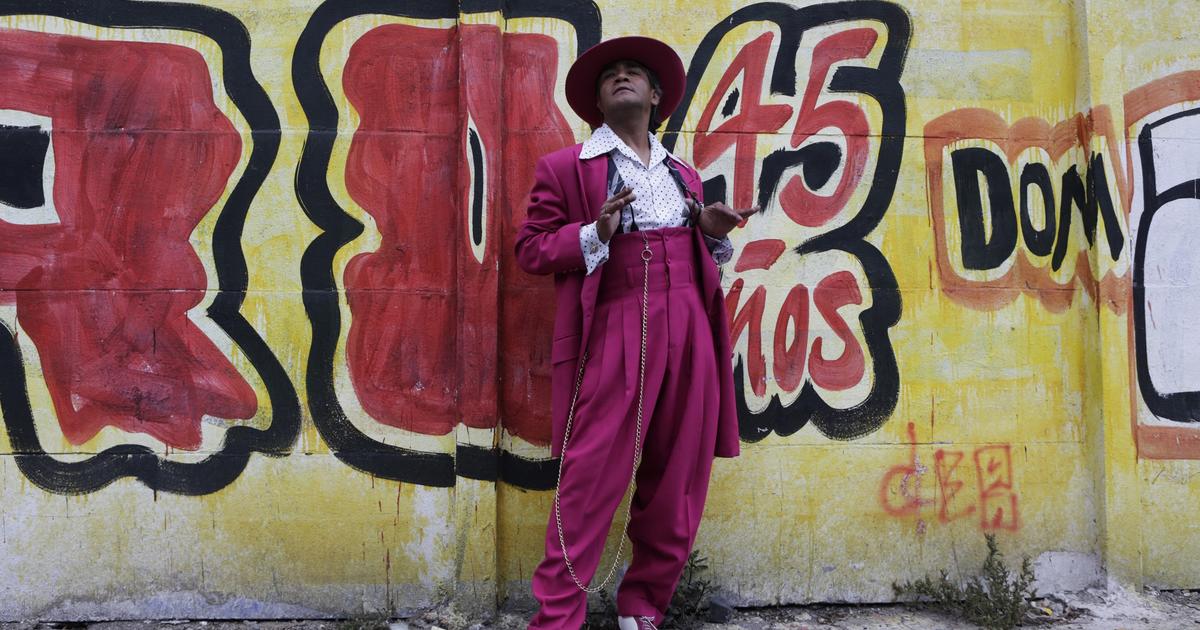 The excess fabric on the suits was viewed as a form of wasting resources which could be used towards production of war materials. The Pachucos wearing the suit, labeled as having a leisurely lifestyle, were seen as un-American by spending their time on the streets rather than contributing to the war. Daniels highlights that this was a misconception, since Pachucos would face discrimination when searching for jobs, on accounts of their racial identity(Daniels 2002: 102). Despite this fact, Pachucos were still targeted because of the way in which they were perceived to be displaying un-American behaviors.
The excess fabric on the suits was viewed as a form of wasting resources which could be used towards production of war materials. The Pachucos wearing the suit, labeled as having a leisurely lifestyle, were seen as un-American by spending their time on the streets rather than contributing to the war. Daniels highlights that this was a misconception, since Pachucos would face discrimination when searching for jobs, on accounts of their racial identity(Daniels 2002: 102). Despite this fact, Pachucos were still targeted because of the way in which they were perceived to be displaying un-American behaviors.
The Sleepy Lagoon Murder
Pachucos taken into custody following the Sleepy Lagoon Murder.
The Sleepy Lagoon Murder, which took place in Los Angeles in 1942, is a key part to the label that was placed on Pachucos. Although they were already stereotyped as being violent, based on their identities as Mexican-Americans, this event allowed outsiders to justify that stereotype paced on Pachucos.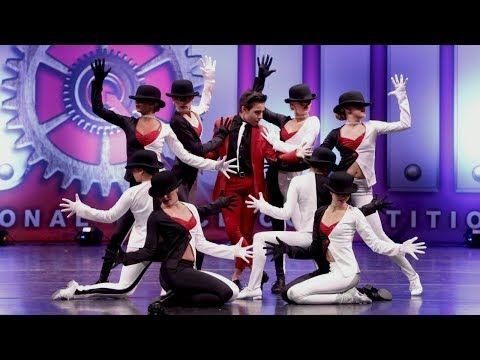 The Sleepy Lagoon was a popular swimming destination for Mexican-Americans, since they were not able to use public swimming pools because of discrimination. At a party near the Sleepy Lagoon, two groups of youth from rivaled neighborhoods had a number of altercations. José Díaz was killed following a number of clashes and brawls between the two rivaled neighborhoods. His body was found at the Sleepy Lagoon, without a clear explanation. The authorities placed the blame on a group of men and women from 38th street, Los Angeles. Twenty-four young men and women, Pachucos and Pachucas, aged between seventeen and twenty-one, were left to face trial for the death of José Díaz. After a number of months of unfair court treatment and practices, all of those on trial were declared to be not guilty (Lucas 2009: 70-72). These trials highlighted how Pachucos were seen as performing gang activities and heavily discriminated against, even in legal issues.
The Sleepy Lagoon was a popular swimming destination for Mexican-Americans, since they were not able to use public swimming pools because of discrimination. At a party near the Sleepy Lagoon, two groups of youth from rivaled neighborhoods had a number of altercations. José Díaz was killed following a number of clashes and brawls between the two rivaled neighborhoods. His body was found at the Sleepy Lagoon, without a clear explanation. The authorities placed the blame on a group of men and women from 38th street, Los Angeles. Twenty-four young men and women, Pachucos and Pachucas, aged between seventeen and twenty-one, were left to face trial for the death of José Díaz. After a number of months of unfair court treatment and practices, all of those on trial were declared to be not guilty (Lucas 2009: 70-72). These trials highlighted how Pachucos were seen as performing gang activities and heavily discriminated against, even in legal issues.
Zoot Riots
This photo captures a Zoot Riot taking place as a Pachuco is beaten and stripped of his clothing.
The Zoot Riots consisted of military personal beating and stripping pachucos of their clothes. These events took place in 1943, following the event of the Sleepy Lagoon Murder. The riots often took place in broad daylight. These occasions were often celebrated by the media and spectators, since they were seen as punishing an un-American act (Daniels 2002: 101). The combination of wearing clothing seen as flaunty and being seen as living a leisurely lifestyle, especially during war times, was not received well by military personnel (Daniels 2002: 103). Pachuco’s could not rely on local forces to help them. There Zoot Riots came to an end when a Naval District admiral made the decision to make Los Angeles out of bounds for his men (Daniels 2002: 101).
Media
A flyer for Luis Valdez’s “Zoot Suit.”
Pachuco’s impact on society can also be understood through its representation in the media. The popular play and movie, Zoot Suit, by Luis Valdez is significant for a few key reasons.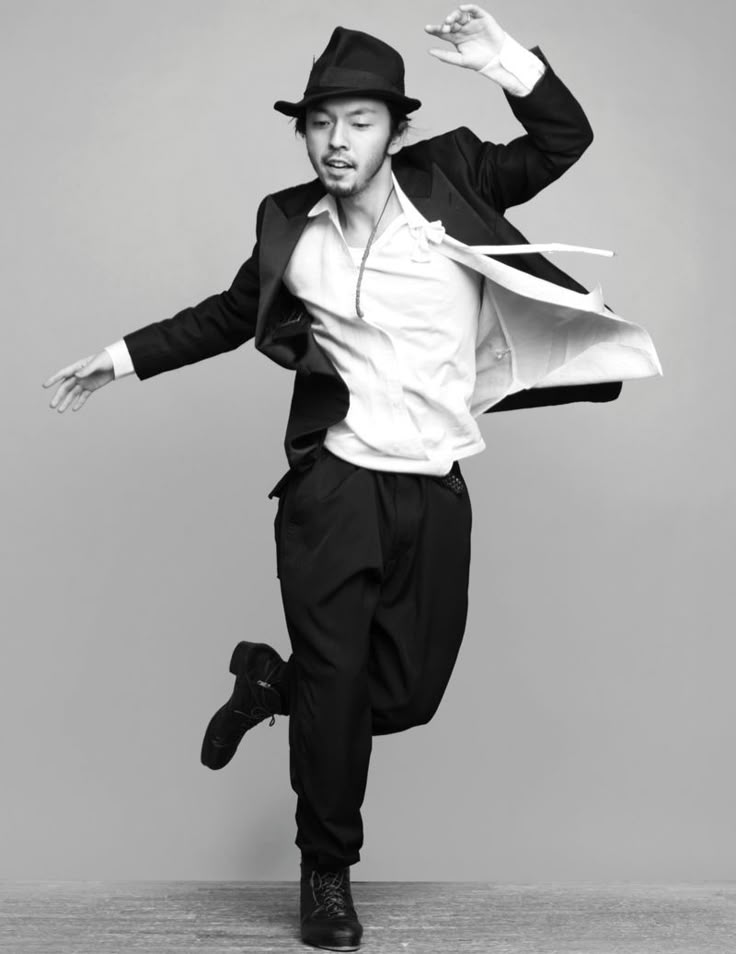 One is that its success allowed for further Latino and Latina exposure through media. “Zoot Suit’s successes in the professional theater and the film industry opened many doors for the transmission of U.S. Latina/o cultures on stage and on screen” (Lucas 2009: 82). The play was first introduced to Broadway in 1979 and only two years later, Luis Valdez directed a filmed version of the play. Although this is important within itself, by empowering a marginalized group, the content of the movie is also key. The movie illustrates many of the challenges which pachucos faced and also illustrates the injustice from the Sleepy Lagoon Trials. “Zoot Suit argues that even while the media portrayed Mexican American youth as a terrorizing force, the Sleepy Lagoon defendants and other youth of color were being terrorized by the public’s and the justice system’s reactions to the media representation of pachucos” (Lucas 2009: 73). Apart from the purpose of demonstrating inequity, the play also brings to light personal challenges of that Pachucos had based on their identity.
One is that its success allowed for further Latino and Latina exposure through media. “Zoot Suit’s successes in the professional theater and the film industry opened many doors for the transmission of U.S. Latina/o cultures on stage and on screen” (Lucas 2009: 82). The play was first introduced to Broadway in 1979 and only two years later, Luis Valdez directed a filmed version of the play. Although this is important within itself, by empowering a marginalized group, the content of the movie is also key. The movie illustrates many of the challenges which pachucos faced and also illustrates the injustice from the Sleepy Lagoon Trials. “Zoot Suit argues that even while the media portrayed Mexican American youth as a terrorizing force, the Sleepy Lagoon defendants and other youth of color were being terrorized by the public’s and the justice system’s reactions to the media representation of pachucos” (Lucas 2009: 73). Apart from the purpose of demonstrating inequity, the play also brings to light personal challenges of that Pachucos had based on their identity. “Characters in the play demonstrate the difficulty of being in this space of being in between two identities but still not claiming/being accepted by either” (Fregoso 1993, 668). When viewed from as a performance by actors, outsiders to the Pachuco subculture are able to gain insight into this world.
“Characters in the play demonstrate the difficulty of being in this space of being in between two identities but still not claiming/being accepted by either” (Fregoso 1993, 668). When viewed from as a performance by actors, outsiders to the Pachuco subculture are able to gain insight into this world.
Although Zoot Suit has power through its intersection of messages and success, the production also had its own setbacks. Those who’s real lives were involved did not have the best perception of it. “Although Zoot Suit earned much critical praise, it was not well received by some of the real-life men and women who took part in and were affected by the Sleepy Lagoon incident and trial” (Ramírez 2006: 20). Valdez also faced lawsuits on account of invasion of privacy. Those who were affected did not enjoy some of the ways in which an event that had large impacts on their lives was portrayed. Apart from this, throughout the storyline, there was also exemplification of males and masculinity being privileged (Fregoso 1993, 670). This included elements like marginalization of women. This was not received well due to the exaggerated fashion in which this was presented, placing a further negative view on the gender differences in Pachuco and Chicano/a culture, although they were often practiced in real life events.
This included elements like marginalization of women. This was not received well due to the exaggerated fashion in which this was presented, placing a further negative view on the gender differences in Pachuco and Chicano/a culture, although they were often practiced in real life events.
Themes
Gendered Double Standards
A Pachuca wearing a full Zoot Suit.
Discrimination from a larger group may bring the group being discriminated towards closer in unity, but this was not exactly the case for all Pachucos. More specifically, for Pachucas, the female partner of Pachucos. Pachucas also had their own attire but would in some instances, wear the same outfits as the men, although they often received a negative response for this. Following the theme of fashion, Pachucas were seen as their male partners accessories. “Pachucas did not receive as much journalistic attention as the men; they were usually viewed as auxiliaries in a girl’s gang paralleling the boys” (Daniels 2002: 99). Despite not receiving the same levels of publicity, there are some key Pachucas to the Pachuco history. Bertha Aguilar, a teenage girl who was brought in the Sleepy Lagoon trials, was a significant figure in the court trials. She refused to respond to the most questions asked of her which led to criticism of ladylikeness. However, when she did respond, her improper grammar led her to be viewed as un-American (Ramírez 2006: 15). This discrimination based on language towards Pachucas was also received for another reason: speaking caló. Although language is a key form of resistance and creating a group identity, Pachucas were viewed negatively if they spoke it. “Chicana speakers of caló/ pachuco slang are seen negatively, labeled with sexually derogatory terms like ‘puta’”(Ramírez 2006: 10). This term is used to label female prostitutes. Another double-standard is created between the Pachucas and Pachucos. The first being dress codes, language restrictions are also placed on Pachucas.
Despite not receiving the same levels of publicity, there are some key Pachucas to the Pachuco history. Bertha Aguilar, a teenage girl who was brought in the Sleepy Lagoon trials, was a significant figure in the court trials. She refused to respond to the most questions asked of her which led to criticism of ladylikeness. However, when she did respond, her improper grammar led her to be viewed as un-American (Ramírez 2006: 15). This discrimination based on language towards Pachucas was also received for another reason: speaking caló. Although language is a key form of resistance and creating a group identity, Pachucas were viewed negatively if they spoke it. “Chicana speakers of caló/ pachuco slang are seen negatively, labeled with sexually derogatory terms like ‘puta’”(Ramírez 2006: 10). This term is used to label female prostitutes. Another double-standard is created between the Pachucas and Pachucos. The first being dress codes, language restrictions are also placed on Pachucas.
This page was created by Gilberto Perez ’21.
Media
This video provides examples of different outfits that Pachucas wore.
A trailer to the film production of Zoot Suit which provides information about events in Pachuco history.
A recent video about modern day Pachuco culture in Los Angeles, California.
The cover image for one of Banda Pachuco’s albums.
The song “Pachuco” covers the topic of traditional Pachuca attire compared to what is worn today.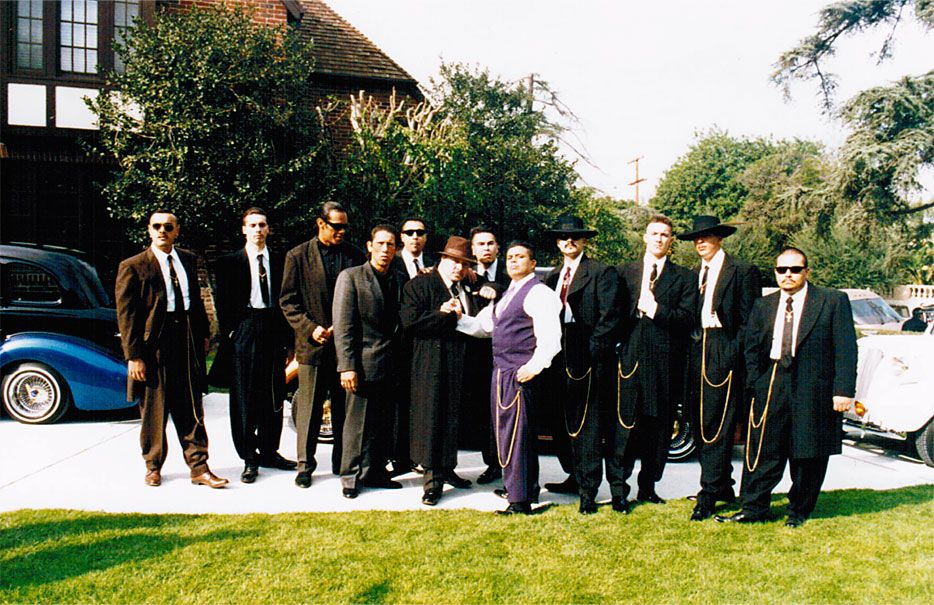 Click here to listen.
Click here to listen.
Scholarship
Scholarship
Articles:
Daniels, D. 1997. Los Angeles Zoot: Race “Riot,” the Pachuco, and Black Music Culture. The Journal of Negro History, 82(2).
Fregoso, R. 1993. The Representation of Cultural Identity in “Zoot Suit” (1981). Theory and Society, 22(5), 659-674.
Ramírez. C. S. 2006. Saying “Nothin”: Pachucas and the Languages of Resistance. Frontiers: A Journal of Women Studies,27(3).
LUCAS, A. 2009. Reinventing the “Pachuco”: The Radical Transformation from the Criminalized to the Heroic in Luis Valdez’s Play “Zoot Suit“. Journal for the Study of Radicalism,3(1).
Books:
Alvarez, L. 2008. The Power of the Zoot: Youth Culture and Resistance during World War II. University of California Press.
Description for publisher’s website:
Flamboyant zoot suit culture, with its ties to fashion, jazz and swing music, jitterbug and Lindy Hop dancing, unique patterns of speech, and even risqué experimentation with gender and sexuality, captivated the country’s youth in the 1940s.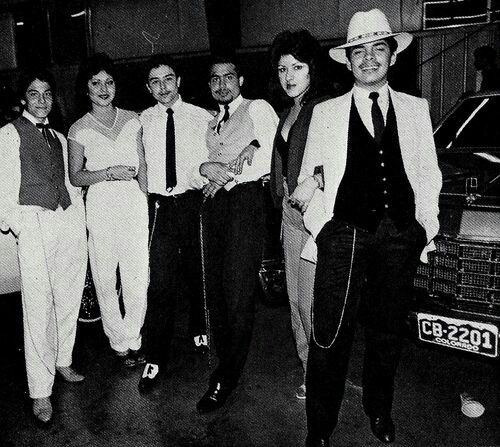 The Power of the Zoot is the first book to give national consideration to this famous phenomenon. Providing a new history of youth culture based on rare, in-depth interviews with former zoot-suiters, Luis Alvarez explores race, region, and the politics of culture in urban America during World War II. He argues that Mexican American and African American youths, along with many nisei and white youths, used popular culture to oppose accepted modes of youthful behavior, the dominance of white middle-class norms, and expectations from within their own communities.
The Power of the Zoot is the first book to give national consideration to this famous phenomenon. Providing a new history of youth culture based on rare, in-depth interviews with former zoot-suiters, Luis Alvarez explores race, region, and the politics of culture in urban America during World War II. He argues that Mexican American and African American youths, along with many nisei and white youths, used popular culture to oppose accepted modes of youthful behavior, the dominance of white middle-class norms, and expectations from within their own communities.
Cummings, L. 2009. Pachucas and Pachucos in Tucson: Situated Border Lives. University of Arizona Press.
Description from publisher’s website:
When the Zoot Suit Riots ignited in Los Angeles in 1943, they quickly became headline news across the country. At their center was a series of attacks by U.S. Marines and sailors on young Mexican American men who dressed in distinctive suits and called themselves pachucos.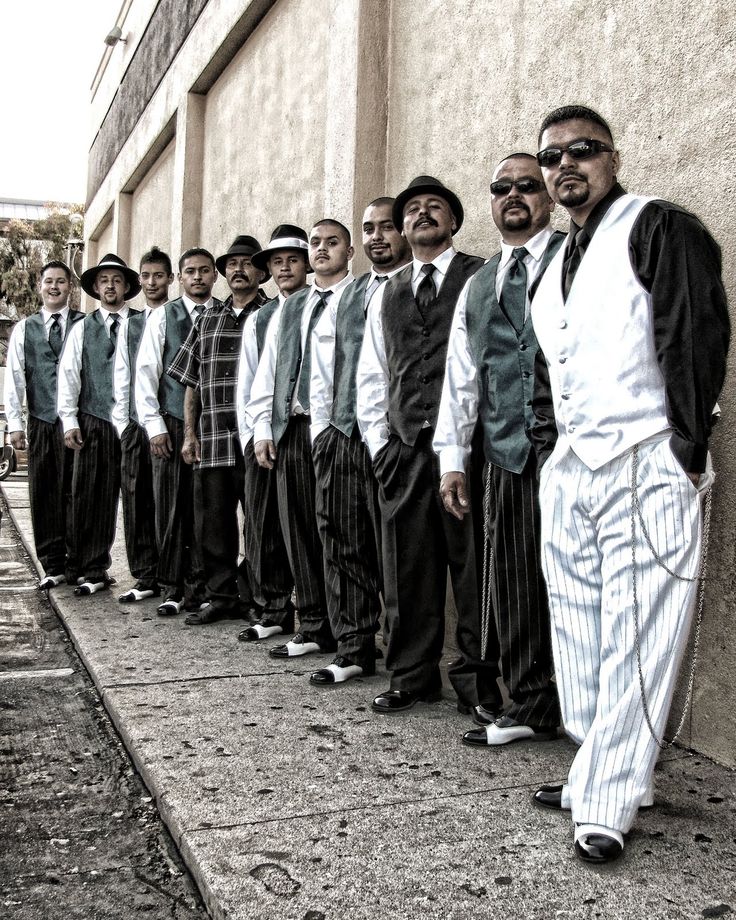 The media of the day portrayed these youths as miscreants and hoodlums. Even though the outspoken First Lady, Eleanor Roosevelt, quickly labeled them victims of race riots, the initial portrayal has distorted images ever since. A surprising amount of scholarship has reinforced those images, writes Laura Cummings, proceeding from what she calls “the deviance school of thought.”
The media of the day portrayed these youths as miscreants and hoodlums. Even though the outspoken First Lady, Eleanor Roosevelt, quickly labeled them victims of race riots, the initial portrayal has distorted images ever since. A surprising amount of scholarship has reinforced those images, writes Laura Cummings, proceeding from what she calls “the deviance school of thought.”
This innovative study examines the pachuco phenomenon in a new way. Exploring its growth in Tucson, Arizona, the book combines ethnography, history, and sociolinguistics to contextualize the early years of the phenomenon, its diverse cultural roots, and its language development in Tucson.
Unlike other studies, it features first-person research with men and women who—despite a wide span of ages—self-identify as pachucos and pachucas. Through these interviews and her archival research, the author finds that pachuco culture has deep roots in Tucson and the Southwest. And she discovers the importance of the pachuco/caló language variety to a shared sense of pachuquismo.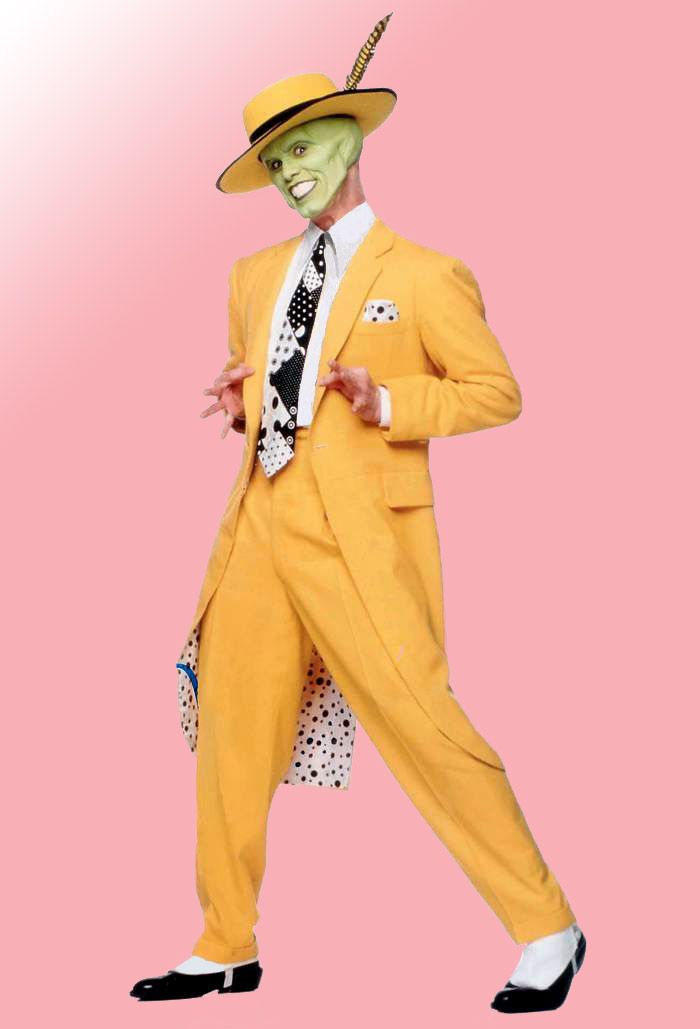 Further, she identifies previously neglected pachuco ties to indigenous Indian languages and cultures in Mexico and the United States.
Further, she identifies previously neglected pachuco ties to indigenous Indian languages and cultures in Mexico and the United States.
Cummings stresses that the great majority of people conversant with the culture and language do not subscribe to the dynamics of contemporary hardcore gangs, but while zoot suits are no longer the rage today, the pachuco language and sensibilities do live on in Mexican American communities across the Southwest and throughout the United States.
Ramirez, C. S. 2009. The Woman in the Zoot Suit: Gender, Nationalism, and the Cultural Politics of Memory. University of California Press.
Description from publishers website:
The Mexican American woman zoot suiter, or pachuca, often wore a V-neck sweater or a long, broad-shouldered coat, a knee-length pleated skirt, fishnet stockings or bobby socks, platform heels or saddle shoes, dark lipstick, and a bouffant. Or she donned the same style of zoot suit that her male counterparts wore.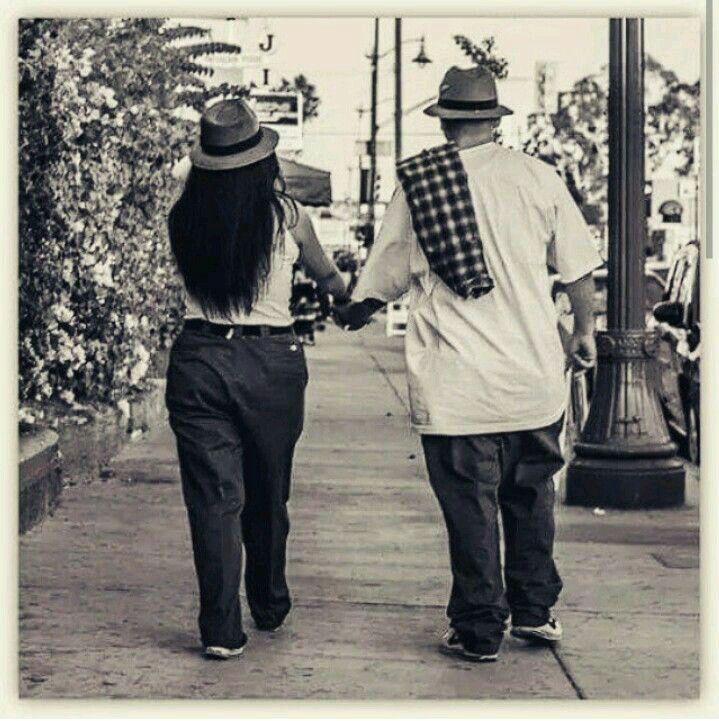 With their striking attire, pachucos and pachucas represented a new generation of Mexican American youth, which arrived on the public scene in the 1940s. Yet while pachucos have often been the subject of literature, visual art, and scholarship, The Woman in the Zoot Suit is the first book focused on pachucas.
With their striking attire, pachucos and pachucas represented a new generation of Mexican American youth, which arrived on the public scene in the 1940s. Yet while pachucos have often been the subject of literature, visual art, and scholarship, The Woman in the Zoot Suit is the first book focused on pachucas.
Two events in wartime Los Angeles thrust young Mexican American zoot suiters into the media spotlight. In the Sleepy Lagoon incident, a man was murdered during a mass brawl in August 1942. Twenty-two young men, all but one of Mexican descent, were tried and convicted of the crime. In the Zoot Suit Riots of June 1943, white servicemen attacked young zoot suiters, particularly Mexican Americans, throughout Los Angeles. The Chicano movement of the 1960s–1980s cast these events as key moments in the political awakening of Mexican Americans and pachucos as exemplars of Chicano identity, resistance, and style. While pachucas and other Mexican American women figured in the two incidents, they were barely acknowledged in later Chicano movement narratives.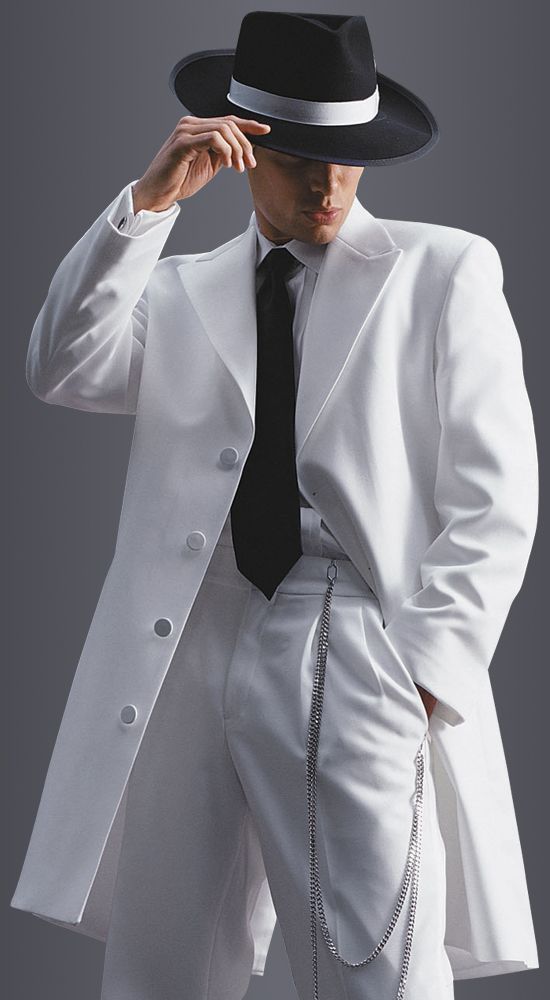 Catherine S. Ramírez draws on interviews she conducted with Mexican American women who came of age in Los Angeles in the late 1930s, 1940s, and 1950s as she recovers the neglected stories of pachucas. Investigating their relative absence in scholarly and artistic works, she argues that both wartime U.S. culture and the Chicano movement rejected pachucas because they threatened traditional gender roles. Ramírez reveals how pachucas challenged dominant notions of Mexican American and Chicano identity, how feminists have reinterpreted la pachuca, and how attention to an overlooked figure can disclose much about history making, nationalism, and resistant identities.
Catherine S. Ramírez draws on interviews she conducted with Mexican American women who came of age in Los Angeles in the late 1930s, 1940s, and 1950s as she recovers the neglected stories of pachucas. Investigating their relative absence in scholarly and artistic works, she argues that both wartime U.S. culture and the Chicano movement rejected pachucas because they threatened traditional gender roles. Ramírez reveals how pachucas challenged dominant notions of Mexican American and Chicano identity, how feminists have reinterpreted la pachuca, and how attention to an overlooked figure can disclose much about history making, nationalism, and resistant identities.
Additional Resources:
To learn more about the biography of Banda Pachuco, click here.
For information and images on contemporary Pachuco style in Mexico City, Mexico, click here.
Pachuco style on the streets of Mexico City
https://inosmi.ru/20140429/219929308.html
Pachuco style on the streets of Mexico City
Pachuco style on the streets of Mexico City
Pachuco style on the streets of Mexico City
People in chic costumes3
zoot, smart boots and wide-brimmed hats - a bright detail of the street fashion of the Mexican capital.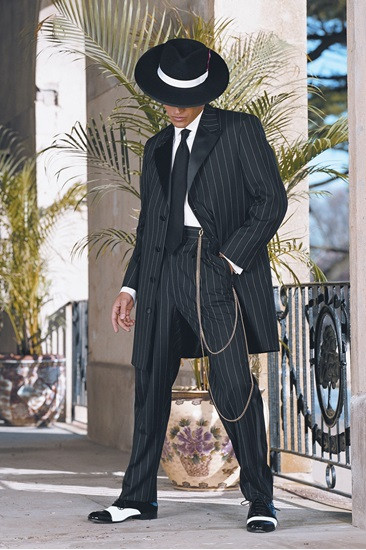 They call themselves pachucos after | 04/29/2014, InoSMI
They call themselves pachucos after | 04/29/2014, InoSMI
2014-04-29T14:45
2014-04-29T14:45
2022-01-18T12:47
/html/head/meta[@name='og:title']/@content
/html/head/meta[@name='og:description']/@content
https://cdnn1. inosmi.ru/images/sharing/article/219929308.jpg?21921927575781642499224
@inosmi.ru+7 495 645 66 01
Rossiya Segodnya
News
ru-RU
https://inosmi.ru/docs/about/copyright.html
https://xn--c1acbl2abdlkab1og.xn--p1ai/
InoSMI
+7 495 645 66 01
Federal State Unitary Enterprise “Russia Today”
Inosmi
+7 495 645 66 01
Federal State Unitary Enterprise “Russia Today”
Info@inosmi 9000 +7 495 495 495 495 645 66 01
FSUE MIA Rossiya Segodnya
photo, multimedia
InoSMI materials contain only assessments of foreign media and do not reflect the position of the editorial staff of InoSMI
Read inosmi.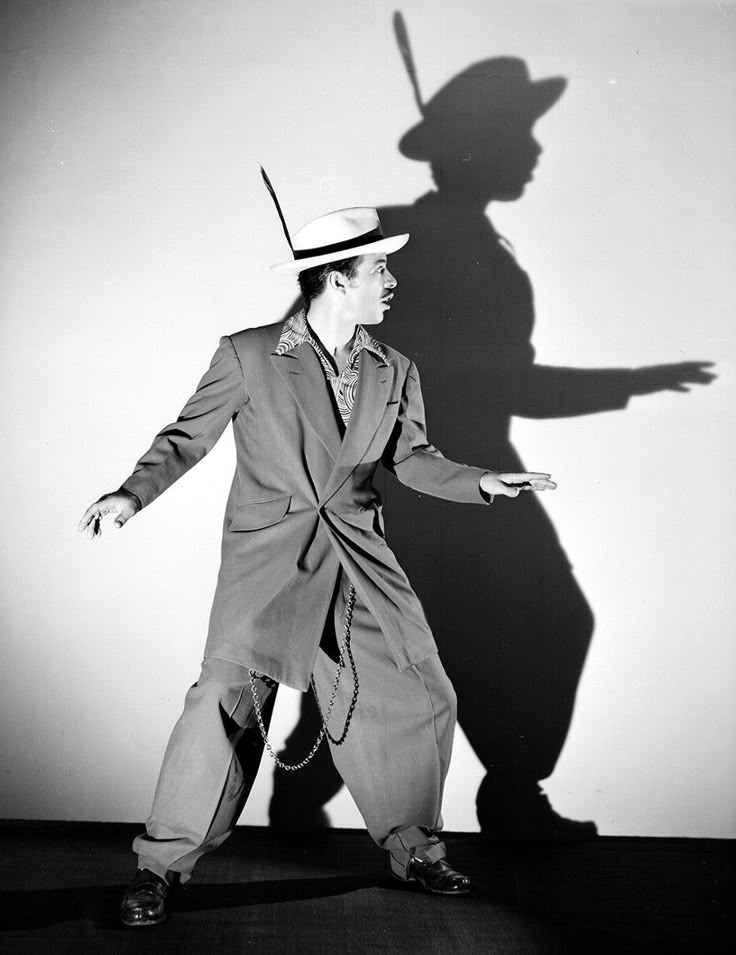 ru in
ru in
People in chic zoot suits, smart boots and wide-brimmed hats are a bright detail of the Mexican capital's street fashion. They call themselves pachucos after a subculture that originated among migrants in the United States in the 1930s and 40s, and consider their image a sign of protest against the conditions in which their compatriots still find themselves on the other side of the northern border. See Reuters photo essay.
© REUTERS / Henry Romero
Pachuco style is inspired by the subculture of migrants who lived in Los Angeles in the 1930s and 40s.
People dressed in pachucos show off their two-tone boots in Mexico City on March 21, 2014.
1 / 12
© REUTERS / Henry Romero
Then among the black and Hispanic youth, the fashion for zoot suits became widespread - long-brimmed jackets, baggy pants with pleats and high waists, wide-brimmed hats and jewelry in the form of bulky cufflinks and chains hanging from the waist.
Pictured: Antonio Gardarrama Tapia, José de Jesus González de la Rosa and Filiberto Flores Mujica in pachuco costumes on Mexico City street.
2 / 12
© REUTERS / Henry Romero
During the years of austerity, such a suit, which required a large amount of fabric to make, became a challenge to racist American society. Soon gangsters began to wear zoot suits - it was convenient to hide weapons in wide folds.
Pictured: José de Jesus González de la Rosa puts on cufflinks as he prepares to go out in his pachuco suit.
3 / 12
© REUTERS / Henry Romero
Zoots have become widespread among Italian migrants - for example, Frank Sinatra dressed in this style - and in Europe. In France, during the Second World War, the Zazu subculture developed, very similar to the Pachuco style of clothing, preferred music (jazz, swing, jump blues) and perception of the world.
Pictured: Daniel Ramirez in his pachuco costume against a graffiti-covered wall in Mexico City.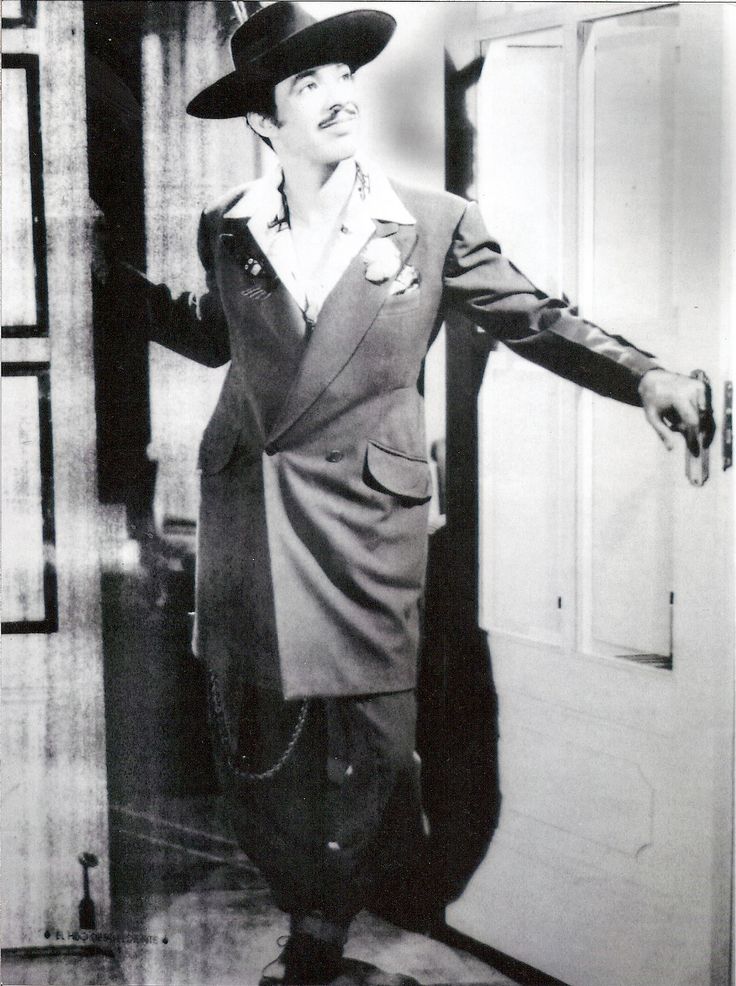
4 / 12
© REUTERS / Henry Romero
For contemporary Pachucos in Mexico City, this image is not just a love of retro style, but a sign of solidarity with their compatriots who find themselves in difficult conditions on the other side of the northern border.
Pictured: pachuco-style hats at José de Jesús González de la Rosa's home in Mexico City
5 / 12
© REUTERS / Henry Romero
All components of the pachuco look are handmade - boots can cost between $60 and $120, suits are about $300, a shirt is about $30, and hats are between $40 and $130.
Pictured: José Heriberto Macias Sotelo in his pachuco costume on a street in Mexico City.
6 / 12
© REUTERS / Henry Romero Details of the suit include a long-brimmed jacket, two-tone boots, a chain dangling from the waist and rich hues.
© REUTERS / Henry Romero
Details of the suit include a long-brimmed jacket, two-tone boots, a chain dangling from the waist and rich hues.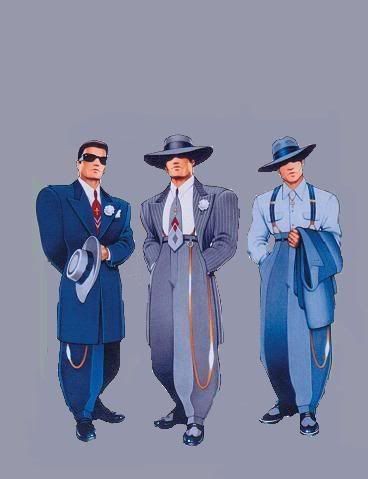
7 / 12
© REUTERS / Henry Romero José de Jesus González de la Rosa waiting for a train on the Mexico City metro.
© REUTERS / Henry Romero
José de Jesus González de la Rosa waiting for a train in the Mexico City metro.
8 / 12
© REUTERS / Henry Romero José Heriberto Macías Sotelo, Filiberto Flores Mujica, Antonio Gardarrama Tapia and their unidentified friend in pachuco costumes.
© REUTERS / Henry Romero
José Heriberto Macias Sotelo, Filiberto Flores Mujica, Antonio Gardarrama Tapia and their unidentified friend in pachuco costumes.
9 / 12
© REUTERS / Henry Romero Oscar Arellano Diaz in a pachuco costume on a street in Mexico City.
© REUTERS / Henry Romero
Oscar Arellano Diaz in a pachuco costume on the streets of Mexico City.
10 / 12
© REUTERS / Henry Romero Pachuco men dance with rumberas women.
© REUTERS / Henry Romero
Pachuco men dance with rumberas women.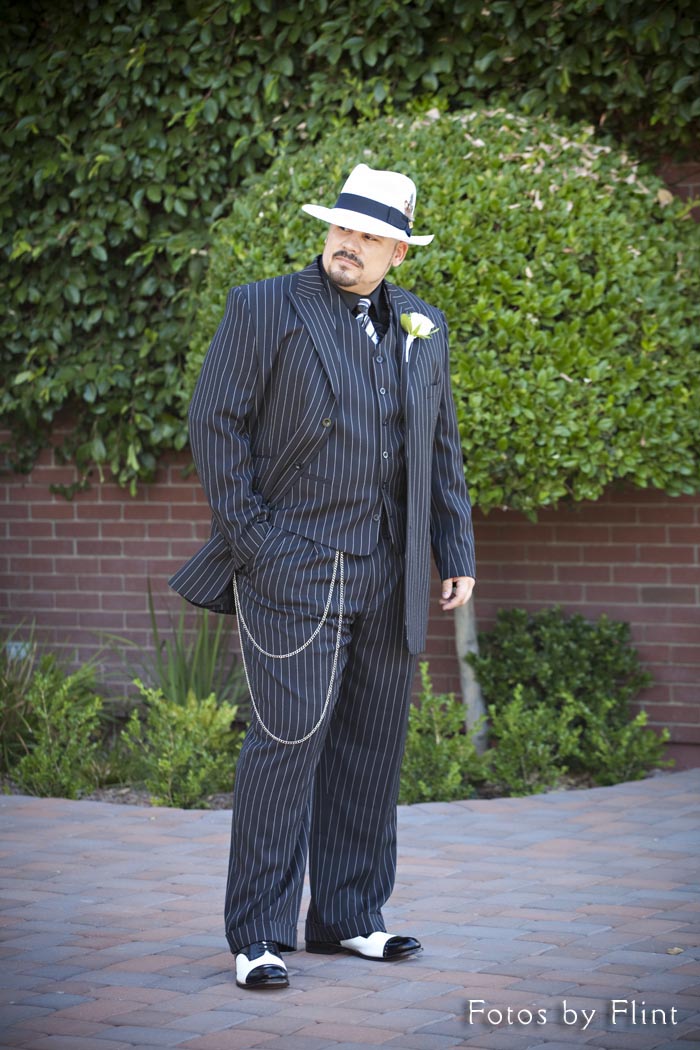
11 / 12
© REUTERS / Henry Romero Pachuco walks down a street in Mexico City.
© REUTERS / Henry Romero
Pachuco walking down the street in Mexico City.
12 / 12
PhotoMultimedia
Hey pachuco! Unforgettable February carnivals
- home
- Blog
- Hey pachuco! Unforgettable carnivals of February
February 10, 2015 Text: Ekaterina Prol
Carnivals do amazing things with people.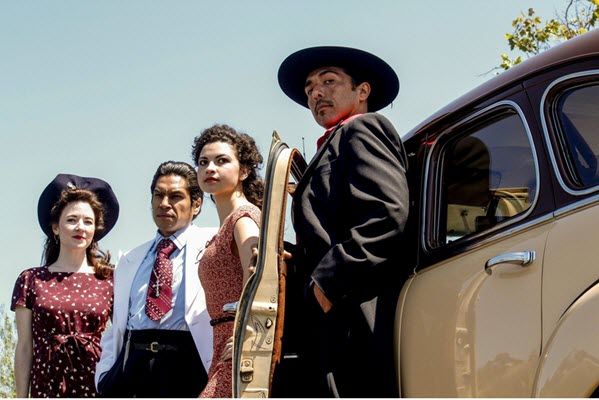 When else do uncles and aunts become children, put on bright funny costumes, hide behind masks and fool around with all their hearts? Carnival is a magical action, the crazy charm of which is simply impossible not to succumb!
When else do uncles and aunts become children, put on bright funny costumes, hide behind masks and fool around with all their hearts? Carnival is a magical action, the crazy charm of which is simply impossible not to succumb!
February is especially rich in colorful costume festivities. In different countries of the world, the traditional carnival has its own flavor. In any case, this is never forgotten. Holiday.by invites you to choose the most suitable event for yourself from the list of unstoppable fun for February.
Venice Carnival in Italy (January 31 - February 17)
The Venice Carnival is one of the most famous in the world. It attracts an incredible number of tourists every year. Experts still argue about the history of the origin of the festival. The first mention of the carnival dates back to the 11th century, and by the end of the 13th century, the colorful event was officially legalized.
The first masks were simple and unpretentious in design.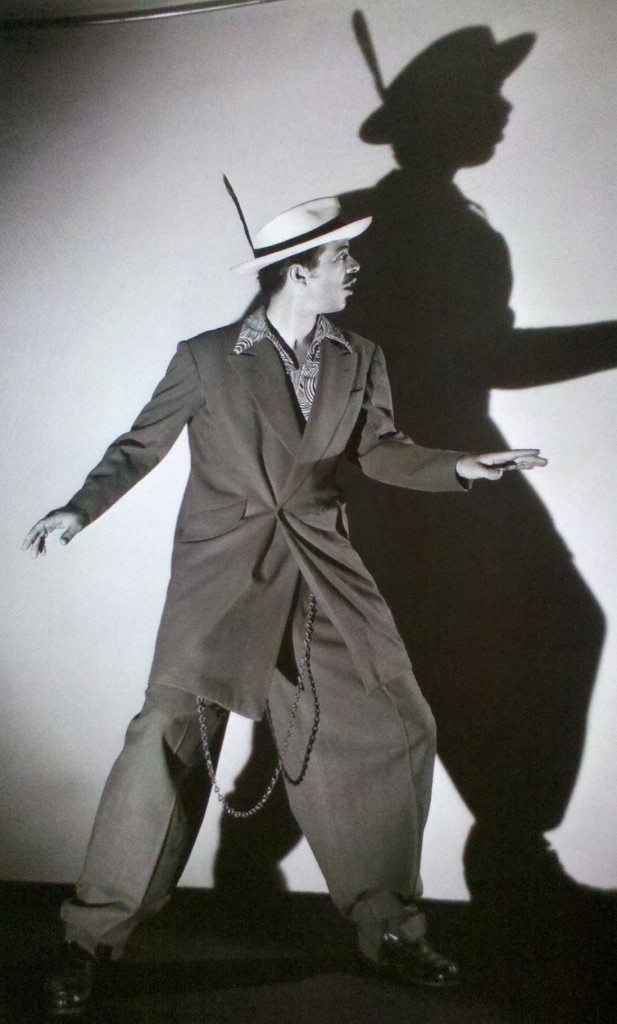 Today they are a real work of art made of leather, papier-mâché and a variety of materials. They are hand-painted and decorated with feathers, precious stones and even gold leaf.
Today they are a real work of art made of leather, papier-mâché and a variety of materials. They are hand-painted and decorated with feathers, precious stones and even gold leaf.
In addition to traditional characters (Harlequin, Pierrot, the beautiful lady), today carnival participants dress up in the most unusual costumes, sometimes simply amazing. Carnival guests especially love the competition for the most beautiful mask.
Rio Carnival in Brazil (February 13)
Who doesn't know about this carnival? The Brazilian parade of wild dances and theatrical show melts the most recalcitrant hearts. There are no sad faces and bad moods here. The festival of competing samba schools gathers more and more participants every year. Now in Rio there are about a hundred performing carnival groups (blokos).
Beer consumption during the festival is about 80% of the local annual norm. Hotel rooms and rentals are four times more expensive than usual. Yes, and pickpockets are activated.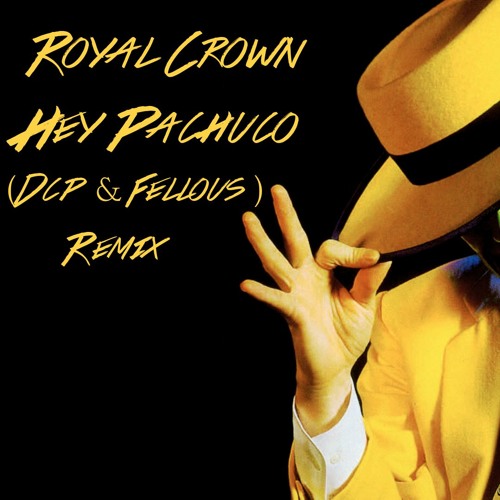 Still, the carnival in Rio is a magical event. And so often among the guests there are celebrities from different countries.
Still, the carnival in Rio is a magical event. And so often among the guests there are celebrities from different countries.
Carnival in France (13 February - 1 March)
One of the world's largest carnivals, Carnaval De Nice (in Nice), is a procession (or rather movement on platforms) of giant puppets weighing about 2 tons and reaching 9-13 meters in height. The "mobile stations" of the giants are decorated with multi-colored light bulbs and built-in mechanisms for special effects, buzzing, spitting smoke and sometimes even scaring.
The King's Doll opens the parade, followed by his large retinue. The second part of the procession is dedicated to huge moving compositions of natural flowers. Beautiful girls showered the head of the audience with rose petals, violets, carnations. At the end of the holiday, the queen of the carnival is traditionally chosen.
Carnival in Germany (February 12-18)
The origins of the carnival in Cologne date back to pagan times. The festivities begin at 11:11 sharp. Huge mobile dolls are also respected here, although in this case they will already be original caricatures of famous politicians or other relevant characters.
The festivities begin at 11:11 sharp. Huge mobile dolls are also respected here, although in this case they will already be original caricatures of famous politicians or other relevant characters.
During the holiday, women establish absolute matriarchy in Cologne and in every possible way emphasize their position of power. For example, without a twinge of conscience they cut off the ties of all the men they meet, and in general, during the carnival, they “reign” in the city hall.
The climax is the appearance of important characters: the Prince, the Maiden and the Peasant. And candy rain falls on the heads of the guests. Whoever catches the candy will also catch good luck for the whole year. Any costumes are welcome. There are no restrictions.
Carnival in Switzerland (February 23)
Carnival Fasnacht (Basler Fasnacht) in Basel starts at 4.00, when it is still dark. The participants of the parade, accompanied by the mesmerizing sounds of wind and percussion instruments, carry a variety of lanterns, which they have been working on for a year.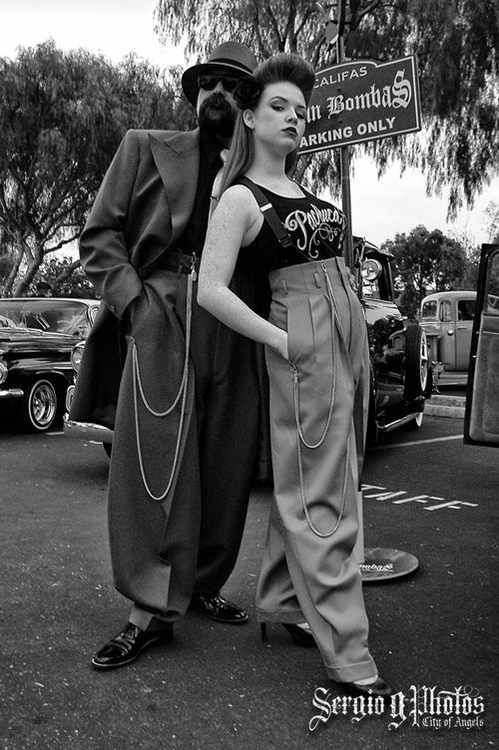 Until the morning, the "sunny waterfall" spills through the streets of the city, from which the heart of the audience stops in the chest.
Until the morning, the "sunny waterfall" spills through the streets of the city, from which the heart of the audience stops in the chest.
Further on, locals and visitors all disperse to pubs and cafes to taste their favorite carnival dishes: onion pie with cheese (quiche), toasted flour soup, mulled wine and sugar-crusted cookies. The rest of the time, other festive costumed processions, traditional competitions of musicians performing wind music, and all kinds of performances await the guests. And boys and girls most of all look forward to the children's day, when they are entertained by numerous clowns on the streets of the city.
See also: Calendar of tourist events in Belarus for February: tea competitions, carnival and oriental dances
Follow Holiday.by
in Telegram
Read Holiday.by
in Viber
Tags: unusual, photo
Beach holidays in Bulgaria. Surprises for tourists in the summer of 2015. Overview of travel agencies
Surprises for tourists in the summer of 2015. Overview of travel agencies
Sandy beaches, no language barrier, excellent value for money - Bulgaria has been a favorite destination for thousands of tourists for years. Families with children and young people come here.
February 10, 2015
Summer 2015. Where Belarusians can have a cheap vacation?
If you think about the rest in advance, then bask in the sun, lying on the beach near the warm sea, you can not only be good, but also cheap. Holiday.by knows where to go so that the family budget does not suffer.
February 9, 2015
New in summer 2015: an exclusive tour with a holiday in sunny Portugal
In the new season, the travel company "Sakura Travel" opens a new country for Belarusian tourists - an incredibly interesting holiday in Portugal on the coast of the Atlantic Ocean.
February 9, 2015
The visa center of Lithuania has been launched in Minsk.